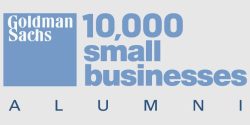Updated: Apr 24, 2015
As an SEO I frequently find myself explaining analytic metrics and what they actually mean. One constant I have noticed with newer clients is their interest in and misunderstanding of the Bounce Rate metric. Another constant is the client’s uncertainty when I explain that the average bounce rate for a website as measured using Google Analytics (or other internal metrics tracking tools) is most likely a useless metric. Please allow me to explain…
What Is a Good Bounce Rate?
A good Bounce Rate is not a fixed number; rather it is a function of visitor behavior over expectation. Visitors will leave a website when they either reach their objective or give up and leave without having a successful visit. A high bounce rate does not always mean the visitor had an unsuccessful visit, and conversely, a low bounce rate does not indicate success. Since there are usually different types of content pages on a website, the type of content and the expected user behavior will gauge what a healthy bounce rate should be. For instance, a webpage that lands for search queries such as what is the current temperature or what time does the Super Bowl start, will most likely have a high bounce rate because visitors get the information they are looking for on the landing/entry page and leave the site. This should be a good thing. Other pages may be long and contain a lot of useful information, but could also record a high bounce rate because visitors read the content, get the information they want, and leave the website.
For other types of content you would expect a successful visit to have more than one pageview. For example, with webpages such as the first page of a multi-page article or a product directory page where visitors are expected to drill down to the detail page of a product, visitors are meant to navigate deeper into the traffic funnel and view more than one page. A high bounce rate for these pages may not be a good thing.
Since there are different types of content that have different visitor engagement expectations, the Bounce Rate should be analyzed in context accordingly.
Bounce Rate Definition
Bounce Rate is defined as the total number of visitors registering only one hit per session divided by the total hits. Bounce Rate only applies to landing or entrance pages. Therefore, a bounce would occur when a visitor lands on a website triggering a hit, does nothing to trigger another hit, and the session times out without a second hit being recorded.
- Br = Bounce Rate
- Th = Total number of visitors recording only one hit
- Te = Total hits to page(s)
- Session: A session is a unique visit to a website and is considered to be complete when a visitor leaves the site or after 30 minutes of no activity by the visitor. If a visitor leaves a website and returns within 30 minutes Google Analytics will record these 2 visits as the same visit. If a visitor leaves a website and returns after the 30 minute timeout, Google Analytics will register this activity as 2 visits and 2 separate and unique sessions.
- Hit: Within the context of this article the term ‘hit’ refers to a metric being recorded with Google Analytics. There are several types of metrics that can be recorded such as pageviews, events, ecommerce activity, and social activity.
- Bounce: Google Analytics considers a visitor to have ‘bounced’ when only one hit is recorded for a session.
Analyzing Bounce Rate
As mentioned, bounce rate needs to be measured and analyzed within context. The average bounce rate across all the pages on a site is not a useful metric for most sites because aggregating user behavior for different types of content pages will produce a meaningless value. Since bounce rate only applies to entrance pages, it is important to determine how visitors are entering/landing on a website.
It is easy to analyze bounce rate for PPC pages because the landing pages and keywords can be specified and therefore bounce rate analysis for these landing pages can be more straightforward. For organic search landings, the search engine directs the visitor to what it determined to be the best landing page for a keyword. So, to analyze bounce rate for organic search visitors, it is necessary to take the following steps:
- Determine on what pages the search engine is landing visitors for which keywords. There are plenty of SEO tools that will provide this information given the keywords.
- Categorize the keywords. For instance, using a vehicle dealer website as an example, keywords can be categorized by sales, rental, parts, branded, financing, etc.
- Group the landing pages for each keyword category.
- Aggregate bounce rate and other metrics by landing page groups.
Using the vehicle dealership as an example, the result could look like the following table:
| LP Group | % New Visitors | Avg Time On Page | Avg P-Views /Visit | BR | % of Visits |
|---|---|---|---|---|---|
| Sales | 76.1% | 58.2 | 3.5 | 30.1% | 22.6% |
| Branded | 39.8% | 103.7 | 4.6 | 29.3% | 9.6% |
| Parts | 79.7% | 63.5 | 2.4 | 54.7% | 5.3% |
| Rental | 83.7% | 59.9 | 3.3 | 62.9% | 1.5% |
| Financing | 77.8% | 50.5 | 3.7 | 44.4% | 1.1% |
This table shows metrics for landing pages grouped into categories. This makes analyzing metrics more useful.
- Sales keyword landing pages show a high percentage of new visitors and a high percentage of traffic volume indicating that website discovery is high for this group. Generally, when landing pages have a high percentage of new visitors the bounce rate tends to be higher. Further segmenting this group between new and returning visitors shows that new visitors have a bounce rate of about 47% and returning visitors have a much lower bounce rate at about 17%.
- Branded keywords include the dealer’s name. Branded keywords are likely to land on the home page or other primary page that starts the vehicle inventory traffic funnel. Pages that land for branded keywords tend to have a lower bounce rate, so the 29.3% bounce rate makes sense. To further analyze this traffic a unique phone number was added to these landing pages, and it was discovered that a large percentage of visitors called the dealership from these pages. A visit where the visitor is looking for a phone number and finds it on the landing page may be recorded as a bounce, but is a successful visit.
- Rental keywords show a high bounce rate. For this site, there are only two rental landing pages to which the search engine refers traffic, and the call-to-action on these pages is “call for availability.” Since the call-to-action prompts the visitor off of the site, a high bounce rate is expected for this keyword group. Simply checking in with the dealer confirms that plenty of rental calls are being generated and the rental volume is higher than ever before so the 62.9% bounce rate is acceptable.
By design, the traffic funnel for sales landing pages is longer than the traffic funnel for the rental pages. Aggregating the metrics would not differentiate expected user behavior.
This method of bounce rate analysis is effective, but it is not perfect. For instance, branded keywords could land on sales pages and slightly skew the metrics. Filtering by keywords provides additional insight if the “not provided” keyword value is low. However, since the percentage of “not provided” keywords is generally increasing it is unlikely that filtering by keywords will be useful.











One Comment
Awesome Information but let me tell you that bounce rates can be very deceptive
Comments are closed.